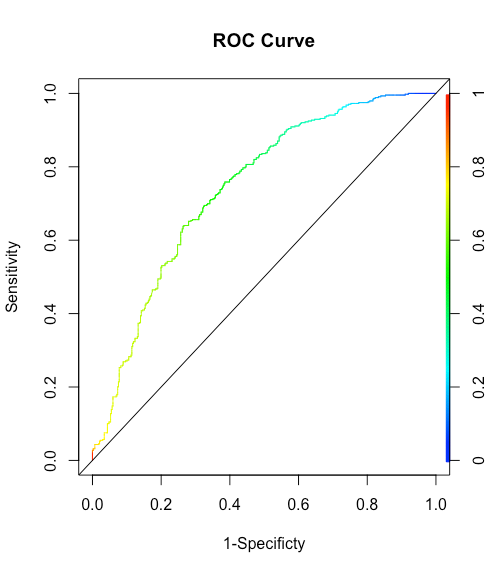Session Information
Session Type: Poster Session (Monday)
Session Time: 9:00AM-11:00AM
Background/Purpose: Ocular involvement in Behçet’s Disease (BD) is associated with chronic damage and high morbidity; however, limited evidence is available on risk factors to recognize the subset of BD patients at jeopardy to develop vision-threatening disease (VTD). There is a clear need for identification of those patients early in order to reduce morbidity. Machine learning (ML), including Artificial Neural Networks (ANNs), have been used to forecast complex disease outcomes in the medical setting including rheumatology. Using the Egyptian College of Rheumatology (ECR) cohort data available, we aimed to develop a data-driven ECR-BD accurate model to predict the risk of VTD using ML techniques, with a combination of demographic, clinical, and biochemical information.
Methods: Out of an ECR-BD, a large multicentric cohort, 1094 patients fulfilling the 2014 International Study Group diagnostic criteria for BD were included. VTD was determined by the presence of retinal disease and/or optic nerve affection and/or occurrence of blindness. Twenty-seven variables including patient demographics, clinical manifestations, comorbidities, medications and laboratory data for each patient were used as predictors (inputs) for building-up and testing the ANNs. Prior to the training of the ANNs, the dataset was randomly split into training (80%), and testing (20%) data. The testing set was used to evaluate the final performance of the networks. Inputs were normalized before being entered in networks. Several networks with different properties were trained, and the performance of each network was evaluated. In order to evaluate and select the most accurate network, we used a confusion matrix (sensitivity, specificity, and accuracy), the receiver operating characteristic (ROC) curve and the area under the ROC curve(AUC) of each network and compared them to the logistic regression (LR) model results. R studio v. 3.5.0 software was used to design the neural networks and LR.
Results: A total of 1094 BD patients [71.5% were men, mean ± SD age; 36.1 ± 10 years; and median disease duration 72 months] had complete ocular manifestations data. The mean BD current activity form was 4.7±3.7. About 75% of the ECR-BD cohort had at least one form of ocular involvements, 49.8% of them had VTD. By applying ANNs, we obtained a model (2 hidden layer and 4 neurons) characterized by a sensitivity of 90%, a specificity of 64%, an accuracy of 77%, and AUC value of 0.86, able to predict VTD. These measures for the LR were 73%, 65%, 76.8%, and AUC value of 0.74 respectively. The ANNs results suggest that C-reactive protein is the most important positive predictor of VTD, followed by disease duration, oral ulcers, and presence of diabetes mellitus.
Conclusion: These findings suggest that the artificial neural network could be an accurate technique for prediction of vision-threatening BD. Therefore, building accurate ML models allowed to identify patients at risk to develop VTD in a large BD cohort. The application of this model on longitudinal data in future work is required.
References:
Gheita TA, ECR-BD study group, et al. Behçet’s Disease in Egypt: a multicenter nationwide study on 1526 adult patients and review of the literature. Clin Rheumatolo. 2019 May 22.
To cite this abstract in AMA style:
Hammam N, Abd El-Latif E, I El-Gazzar I, Samy N, A Abdel Noor R, El-Shebeiny E, R El-Najjar A, N Eesa N, N Salem M, E Ibrahim S, F El-Essawi D, M Elsaman A, M Fathi H, A Sallam R, R El-Shereef R, I Abd-Elazeem M, A Said E, M Khalil N, Shahin D, M El-Saadany H, S ElKhalifa M, I Nasef S, M Abdalla A, Noshy N, M Fawzy R, Saad E, Moshrif A, T El-Shanawany A, H Abdel-Fattah Y, M Khalil H, Gheita T. Development of Machine Learning Models (Artificial Neural Networks) for Prediction of Vision Threatening Behçet’s Disease [abstract]. Arthritis Rheumatol. 2019; 71 (suppl 10). https://acrabstracts.org/abstract/development-of-machine-learning-models-artificial-neural-networks-for-prediction-of-vision-threatening-behcets-disease/. Accessed .« Back to 2019 ACR/ARP Annual Meeting
ACR Meeting Abstracts - https://acrabstracts.org/abstract/development-of-machine-learning-models-artificial-neural-networks-for-prediction-of-vision-threatening-behcets-disease/


